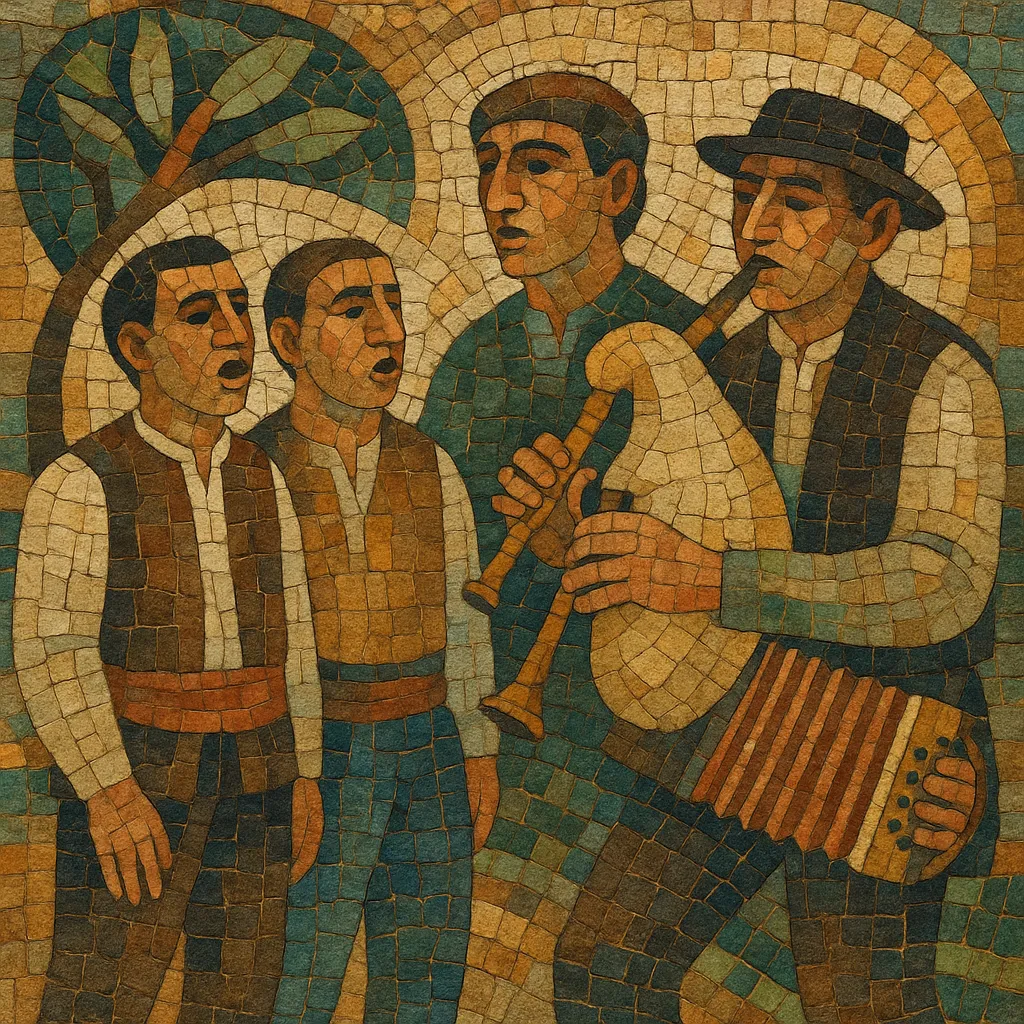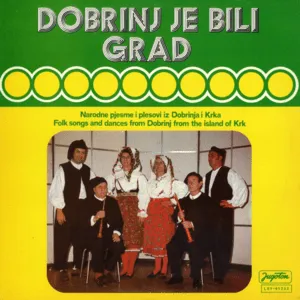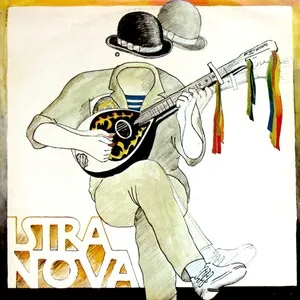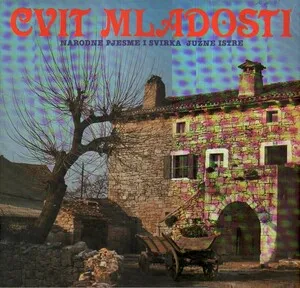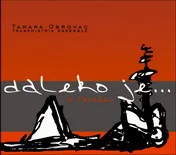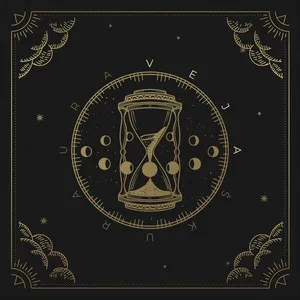Istrian folk music is the traditional music of the Istrian peninsula, today largely in Croatia (with a smaller portion in Slovenia), best known for its distinctive two-part singing and playing in the so‑called Istrian scale. This hexatonic, narrow-interval modal system often features microtonal inflections and cadences that resolve to unison or the octave, producing a tense yet haunting sonority.
Performances typically involve two voices singing "na tanko i na debelo" (literally "thin and thick"—a higher and a lower part) in close, sometimes rough parallel motion. Instrumental traditions include piercing double-reed shawms (sopile/sopela in Croatian; roženice in Slovenian Istria), the mih (a local bagpipe), dvojnice (double flute), and later the diatonic accordion. Dances such as the Istrian balun accompany this music, linking the vocal and instrumental styles to communal festive life.
In 2009, UNESCO recognized "Two-part singing and playing in the Istrian scale" as part of the Representative List of the Intangible Cultural Heritage of Humanity, underscoring both its antiquity and its vibrant, living tradition.
Istrian folk music likely predates written documentation, developing across rural communities of the Istrian peninsula through oral transmission. Its hallmark two-part texture and distinctive hexatonic (Istrian) scale suggest deep roots in older European folk modalities and regional multipart singing practices.
Systematic collection began in the 19th century as folklorists and local cultural societies started writing down tunes and texts. In the early 20th century, composer and educator Ivan Matetić Ronjgov analyzed and codified the Istrian scale and two-part cadence patterns, giving the tradition a theoretical foundation that helped safeguard it.
After World War II, cultural clubs (KUDs) and national/municipal ensembles presented Istrian repertoires on stage, standardizing instruments such as sopile/sopela alongside newer additions like diatonic accordion. Field recordings, radio programs, and festivals increased the music’s visibility, while local dialect poetry and storytelling remained integral.
In 2009, UNESCO inscribed “Two-part singing and playing in the Istrian scale” on its Representative List, spurring educational projects, workshops, and renewed interest among younger performers. Today the style lives both in community settings (dance events, village feasts) and in innovative fusions (ethno-jazz, contemporary folk ensembles), with careful attention to dialects (notably Chakavian) and traditional performance etiquette.

